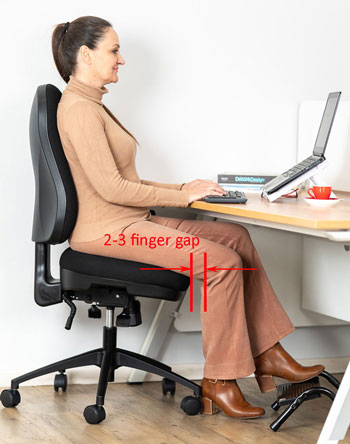- Your cart is empty
- Continue Shopping
What is an Ergonomic Chair?
According to Ergonomic Trends, “an Ergonomic Chair is one that not only follows best practices in terms of proven ergonomic
Working from home may easily lead to a compromise in the ergonomic setup of our work space, which can have a detrimental effect on your health and productivity. What is ergonomics in the workplace? In a nutshell, your home office setup must include a correctly adjusted ergonomic chair, desk and computer monitor. Here is a simple 3-step guide.
FACT: Your chair and it’s setup is the single most important component of your home office.
Your home office setup starts by moving the chair AWAY FROM THE DESK.

Now, and only now, move the chair towards the desk.
Once you have set up your chair correctly, your desk or table is the next component in your home office that needs attention. Adjust the height of the desk to approximately the height of your elbows.
The final step for a perfect home office setup is to adjust the position of your monitor.
Your home office setup can improve comfort in your daily working life….provided you have the right equipment and it’s setup correctly!
According to Ergonomic Trends, “an Ergonomic Chair is one that not only follows best practices in terms of proven ergonomic
What is an orthopedic office chair and how does if differ from an ergonomic chair? Which is best for chronic lower back pain?
Office chairs have an array of levers and knobs to adjust the backrest, seat and armrests. How do you achieve a healthy sitting posture?